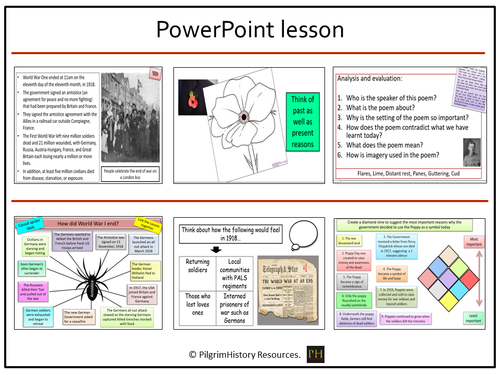


World War I
The aim of this lesson is to understand the importance of the Poppy on Armistice Day. The lesson is split into two parts.
The first part of the lesson analyses the causes of the war ending in 1918.
Using a causal spiders web (an idea taken from Emily Thomas), students link the ideas together by drawing lines and then justify their reasons to create a spider’s web.
The second part of the lesson analyses the significance of the use of the Poppy with students giving their own reasons for this on the poppy leaves (a template is included).
They then have to prioritise the most important reasons why the Government introduced Poppy Day with a diamond nine activity.
Students also have the chance to evaluate John McCrae’s in Flanders poem
with some ‘clever question stems’.
This lesson is enquiry based with a key question using a lightbulb posed at the start of the lesson and revisited throughout the lesson and this unit of study to show the progress of learning.
The resource includes retrieval practice activities, suggested teaching strategies and differentiated materials, and comes in Powerpoint format if there is a wish to adapt and change.
Something went wrong, please try again later.
This resource hasn't been reviewed yet
To ensure quality for our reviews, only customers who have purchased this resource can review it
Report this resourceto let us know if it violates our terms and conditions.
Our customer service team will review your report and will be in touch.